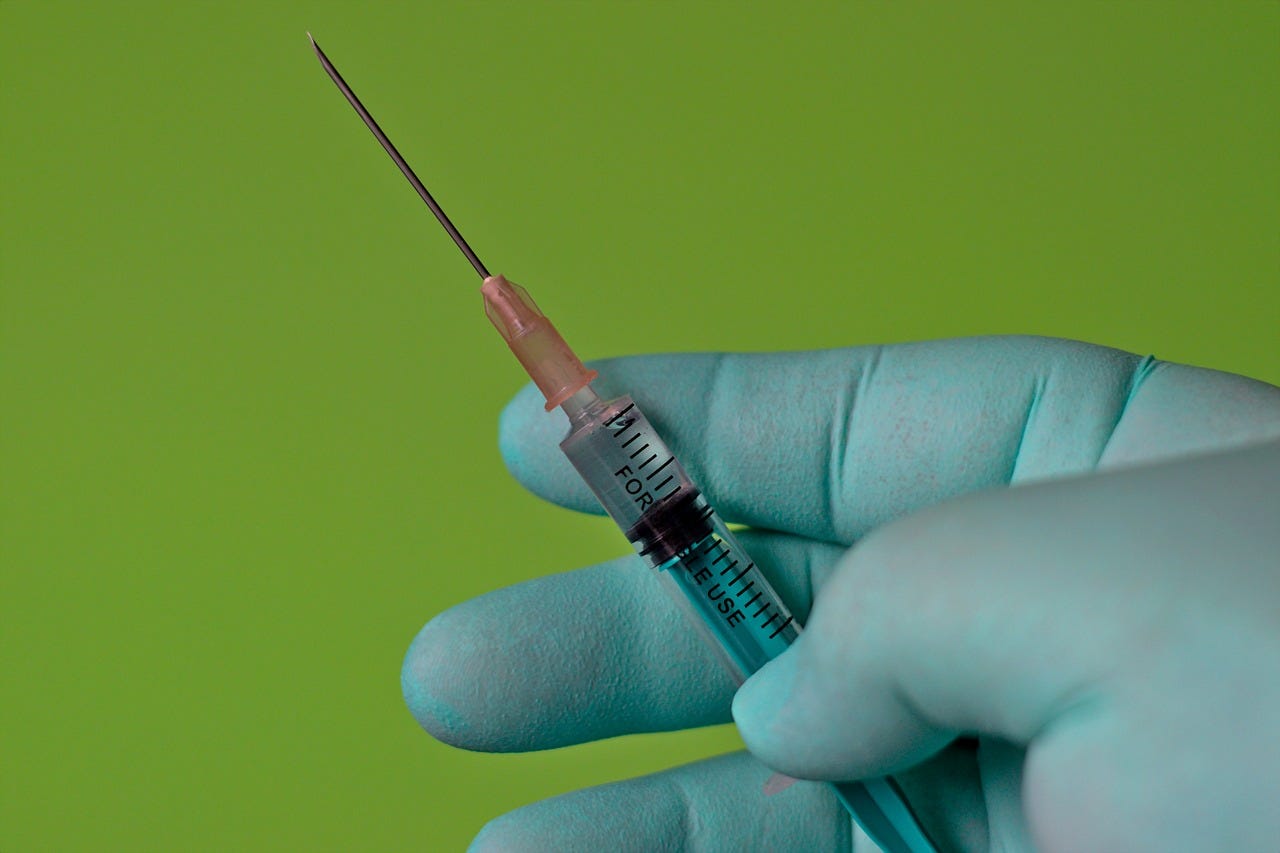Experts Discuss Importance of Vaccines
Because of social media, information and misinformation about vaccines is becoming harder to distinguish between
On October 27th, the Morgridge Institute for Research hosted a webinar. The panel was moderated by Dr. Paul Ahlquist, the Director of the John W. and Jeanne M. Rowe Center for Research in Virology. The panelists included Dr. Jorge Osorio who is a professor of Pathobiological sciences and a co-founder of Inviragen, Dr. Nasia Safdar who is an associate dean for clinical trials at the UW-School of Medicine and Public Health, and Dr. John V. Williams the John E. Jr. and Louise A. Gonce Chair in Pediatrics at the UW-School of Medicine and Public Health. The webinar used a question-and-answer format where members of the public were allowed to inquire on topics related to vaccination.
To start, Dr. Safdar answered a question regarding how vaccines are evaluated. She stated there are multiple stages a vaccine needs to pass before making it onto the market. A vaccine must demonstrate it identified the right target, and it must also demonstrate safety through the laboratory system.
Once it reaches human testing, there are three phases it must clear. At each stage, there are multiple checkpoints where a possible issue can be identified. Even after approval, the vaccine is monitored for effectiveness and potential health risks. Dr. Williams stated that vaccines are first tested on low-risk populations first before making it to high-risk groups to ensure their safety. Dr. Osorio added that testing across diverse populations is essential, since certain groups of people may respond differently to the vaccine.
Dr. Safdar observed that information and misinformation about vaccines is becoming harder to distinguish between. This is primarily due to the effect of social media where anyone can upload exaggerated videos with false medical information. In recent years, vaccination rates have decreased, particularly in the United States, making it crucial to dispel myths and rumors about vaccines.
A way of identifying fake information is if the post mentions extreme side effects or claims to be effective 100% of the time. Instead of relying solely on social media for medical information, trusted sources such as the Infectious Disease Society of America or the Pediatric Infectious Diseases Society give accurate information. Dr. Osorio believes that academic institutions should work together to make accurate information more accessible to the public.
Continually, Dr. Osorio highlighted the ongoing importance of vaccines. He stated that vaccines are still incredibly beneficial, even though many people believe vaccines have eradicated certain diseases. Infections can still occur because a disease is never “fully eradicated.” Polio has been eliminated from most of the world due to a ubiquitous vaccine. However, a few years ago, a traveler from another country reintroduced polio to New York City. This example also shows that herd immunity is important in preventing widespread disease.
In response to another question, Dr. Williams described how the timing of childhood vaccines are determined. Young children have an immature immune system, so their vaccines are spaced out every couple of months to boost their response. While babies are born with antibodies from their mothers, they are not protected against all diseases, and the antibodies diminish once babies reach 12 months old. Babies are at a much higher risk of infection, so it is important to follow the vaccination schedule for children which is proven effective by many medical professionals.
Dr. Williams was asked if childhood vaccination is pushed in order for pharmaceutical companies to make money. He acknowledged that “this is a crucial question that should be asked to identify the true motive of a company.”
The global vaccine industry is worth billions. Back in the 70’s and 80’s, many vaccine producers were struck down by lawsuits, and due to this, the federal government transferred financial responsibility to the National Vaccine Injury Compensation program.
Around 40% of kids receive shots through special programs which allow free or low-cost vaccination. Pharmaceutical companies still run facilities that are extremely costly, so therefore, the children’s vaccines industry is not significantly profitable.
The panel was then asked if elderly people gain immunity if they had previously been infected with the disease or received a vaccine. Dr. Osorio noted that, in the case of polio, there are three serotypes, so getting the vaccine is still important regardless of past vaccination history. To combat serotypes, Dr. Osorio mentioned using mRNA vaccines as a technique of personalized medicine and broad spectrum vaccines that combat changing variants of a disease.
If the natural disease was present, there is likely still protection. To be certain, blood can be tested for the presence of antibodies. However, vaccine protection can fade over time, so it is recommended that the elderly receive vaccines regularly.
Dr. Williams addressed a question regarding older peoples’ immune systems and their response to vaccines. He reports that as we age, we develop immunosenescence, which is when our immune systems weaken, leading to a declined response. As a result, people around 60 to 65 years old do not respond to vaccines as effectively as the younger population, so they require higher doses.
Dr. Williams recalled the primary change ordered by the Centers for Disease Control and Prevention (CDC) which is essentially separating the MMR and varicella vaccines. Initially, these vaccines were combined to be more convenient, so patients took fewer shots. Additionally, many manufacturers don’t produce them separately; instead, they sell the combined vaccines. The CDC discussed changing the birth dose of hepatitis B, but this was tabled because of negative effects on infants. Dr. Safda stated, “Vaccines don’t save lives, vaccinations do.”




